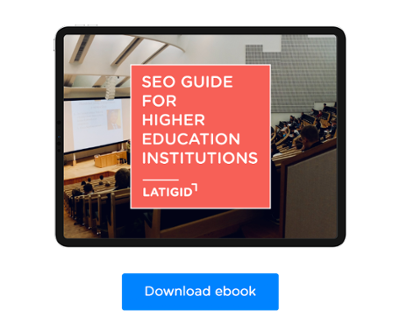
Customer Relationship Management (CRM) systems have emerged as a game-changer for universities. These sophisticated platforms, once the domain of businesses, are now playing a pivotal role in higher education institutions worldwide. This article explores the world of CRM for universities, and how these systems are revolutionizing decision-making processes in higher education.
What is a CRM for Universities?
A CRM (Customer Relationship Management) system for universities, often referred to as a Student Information System (SIS) or a Constituent Relationship Management system (CReMS), is a specialized software solution designed to help educational institutions manage and enhance their interactions and relationships with various stakeholders, including students, prospective students, alumni, faculty, staff, and donors.
Here are key aspects of what a CRM for universities typically involves:
Student Management: Universities use CRMs to maintain comprehensive records of student information. This includes admissions data, academic records, class schedules, contact information, and more.
Admissions and Enrollment: CRMs assist in the admissions process by managing prospective student inquiries, applications, and enrollment data. This includes tracking applicant progress, managing documents, and automating communication with applicants.
Communication and Engagement: Universities use CRM systems to communicate with students, alumni, and other stakeholders through various channels, including email, SMS, and social media.
Academic Support: Some CRMs offer features to support academic advising and student success. This might include tracking student progress, identifying at-risk students, and facilitating communication between students and advisors.
Analytics and Reporting: CRMs generate data and insights that universities can use for decision-making. They offer reporting tools to track various metrics, such as student demographics, engagement rates, fundraising progress, and more.
Integration: Integration capabilities are vital for a CRM in a university setting. These systems often need to connect with other university software and databases, such as learning management systems (LMS), financial systems, and human resources systems.
Security and Compliance: Due to the sensitive nature of student and alumni data, CRM systems for universities must prioritize security and compliance with relevant regulations like the Family Educational Rights and Privacy Act (FERPA).
Key benefits of CRM for Universities
Implementing a CRM system in universities can bring about several key benefits:
Improved Student Engagement: CRMs enable universities to engage with students in a more personalized and targeted manner. This can lead to increased student satisfaction, better retention rates, and improved overall student experiences.
Efficient Admissions Process: Universities can streamline their admissions process with CRMs, making it easier for prospective students to apply and for admissions teams to process applications.
Enhanced Alumni Relations: CRMs help universities maintain and strengthen relationships with alumni. By keeping track of alumni data and engagement history, universities can facilitate fundraising efforts, alumni events, and networking opportunities.
Data-Driven Decision Making: CRM systems collect and analyze data on various aspects of university operations, from admissions to alumni engagement. This data can inform strategic decisions, helping universities allocate resources more effectively and improve their overall performance.
Personalized Communication: CRM systems allow universities to send personalized communications to students, alumni, and other stakeholders. This personalization can improve the effectiveness of marketing, recruitment, and engagement efforts.
Streamlined Administrative Processes: CRMs automate many administrative tasks, reducing the administrative burden on university staff. This leads to greater efficiency and cost savings.
Improved Student Success: Some CRMs offer features for tracking student progress and identifying at-risk students. This enables universities to intervene and provide support when needed, improving student success rates.
Scalability: CRM systems can grow with the institution. As a university expands, the CRM can accommodate the increased data and communication needs.
Enhanced Marketing ROI: Universities can measure the effectiveness of their marketing campaigns more accurately with CRM systems, allowing them to allocate resources to the most successful strategies.
Compliance and Data Security: CRM systems help universities maintain compliance with data protection regulations such as FERPA (Family Educational Rights and Privacy Act) and GDPR (General Data Protection Regulation), ensuring the security and privacy of student and alumni data.
Related article: Improving Retention Rates: Leveraging CRM in Higher Education
How to use CRM Data for a good University Decision-Making?
Using CRM data properly for effective university decision-making involves several key steps and considerations:
Data Collection and Management:
- Ensure that your CRM system is collecting comprehensive and accurate data on various university stakeholders, including students, alumni, donors, faculty, and staff.
- Regularly update and clean the data to remove duplicates, outdated information, and errors.
Define Clear Objectives:
- Clearly define the goals and objectives of your university decision-making processes. What specific outcomes are you trying to achieve?
- Determine which key performance indicators (KPIs) are most relevant to your goals.
Segmentation:
- Segment your CRM data into meaningful categories or segments based on relevant criteria, such as demographics, academic majors, enrollment status, alumni graduation years, etc.
- Segmentation allows for more targeted decision-making by addressing the unique needs and preferences of different groups.
Data Analysis:
- Utilize data analytics tools within your CRM system or external analytics software to gain insights from your data.
- Analyze historical data to identify trends, patterns, and correlations that can inform future decisions.
Predictive Analytics:
- Implement predictive analytics models to forecast future trends and outcomes. For example, predict enrollment numbers for the upcoming academic year or identify at-risk students who may need additional support.
Student Success Initiatives:
- Use CRM data to identify students who may be struggling academically or socially. Implement proactive interventions and support systems to improve student success and retention rates.
Recruitment and Admissions:
- Analyze data related to admissions, such as application trends, acceptance rates, and yield rates, to optimize recruitment strategies.
- Identify the characteristics of successful applicants and target similar prospective students.
Alumni Engagement and Fundraising:
- Segment alumni data based on giving history, graduation year, and affinity with the university.
- Tailor fundraising campaigns and engagement efforts to specific alumni segments to maximize contributions and involvement.
Marketing and Communication:
- Leverage CRM data to personalize marketing and communication efforts. Send targeted messages to different segments of your audience based on their interests and preferences.
Resource Allocation:
- Use data to allocate resources effectively. Determine which programs, departments, or initiatives are most successful and allocate resources accordingly.
Benchmarking and Competitive Analysis:
- Compare your university's performance metrics with industry benchmarks and peer institutions. Identify areas where you can improve and set realistic goals for improvement.
Feedback Loops:
- Implement feedback mechanisms to collect input from students, faculty, and staff. Use CRM data to track and analyze feedback to make continuous improvements.
Data Privacy and Security:
- Ensure that all CRM data is handled in compliance with relevant data protection regulations, such as FERPA or GDPR, to protect the privacy of students and stakeholders.
Training and Skill Development:
- Provide training to university staff on how to effectively use CRM data for decision-making. Develop data literacy skills among relevant team members.
Regular Review and Adaptation:
- Continuously review the impact of decisions made using CRM data and adapt strategies as needed. The decision-making process should be dynamic and responsive to changing circumstances.
Related article: CRM Software for Universities: The Best Options in the Market
About LATIGID
We are a Higher Education Marketing Agency, specialized in CRM implementation. With a deep understanding of the latest industry trends and best practices, we are well equipped to help your institution grow.
If you are looking for a Higher Education Marketing Agency to partner with, check our page to see what we can do for you!
Download our SEO guide and learn how to build a strategy to optimize your Higher Education Institution's website




